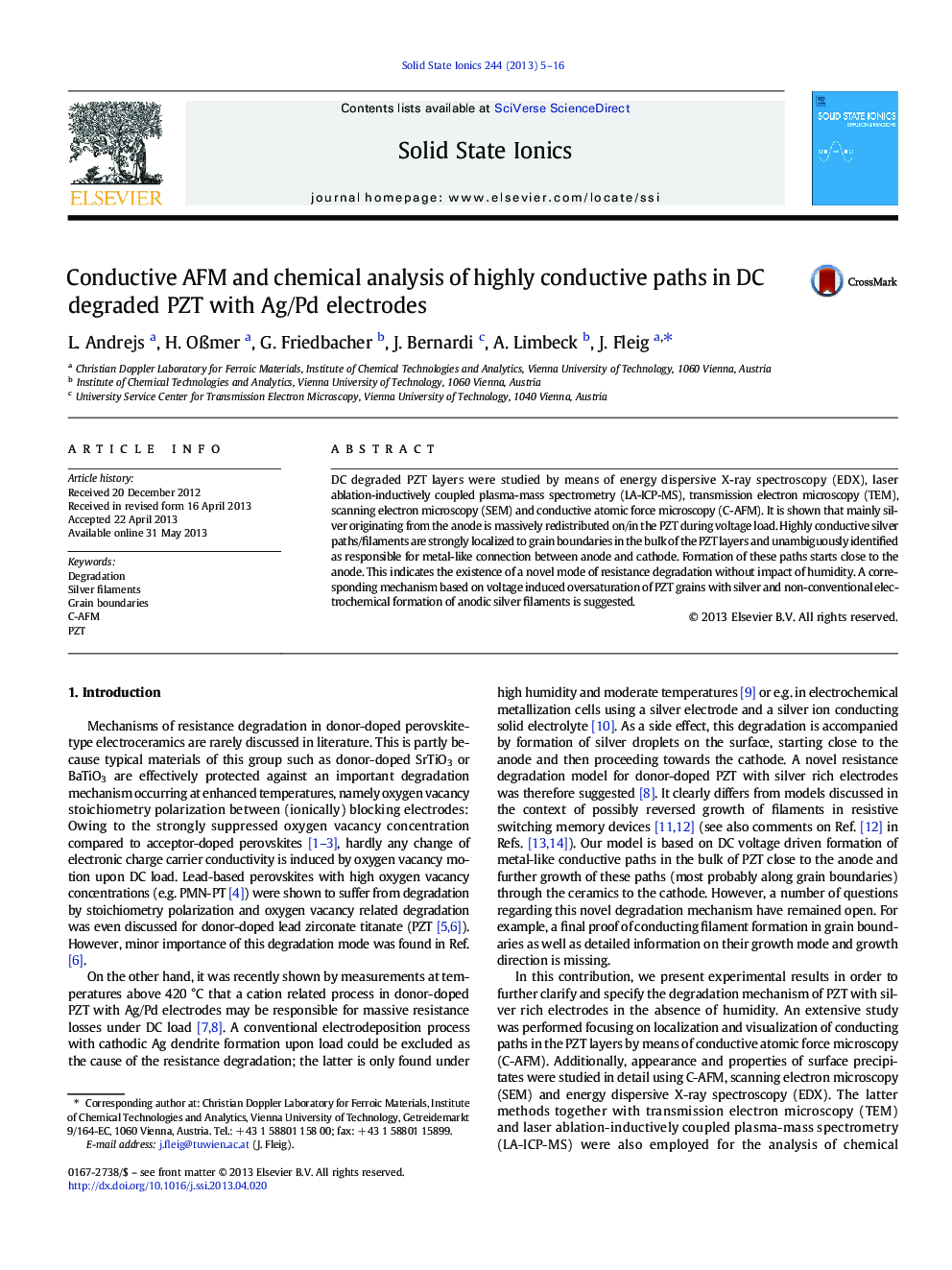| Article ID | Journal | Published Year | Pages | File Type |
|---|---|---|---|---|
| 1295841 | Solid State Ionics | 2013 | 12 Pages |
•Novel resistance degradation mode differing from stoichiometry polarization.•Metal-like conductive filaments were found in the bulk along grain boundaries.•Mechanism leading to formation of filaments is suggested.
DC degraded PZT layers were studied by means of energy dispersive X-ray spectroscopy (EDX), laser ablation-inductively coupled plasma-mass spectrometry (LA-ICP-MS), transmission electron microscopy (TEM), scanning electron microscopy (SEM) and conductive atomic force microscopy (C-AFM). It is shown that mainly silver originating from the anode is massively redistributed on/in the PZT during voltage load. Highly conductive silver paths/filaments are strongly localized to grain boundaries in the bulk of the PZT layers and unambiguously identified as responsible for metal-like connection between anode and cathode. Formation of these paths starts close to the anode. This indicates the existence of a novel mode of resistance degradation without impact of humidity. A corresponding mechanism based on voltage induced oversaturation of PZT grains with silver and non-conventional electrochemical formation of anodic silver filaments is suggested.
